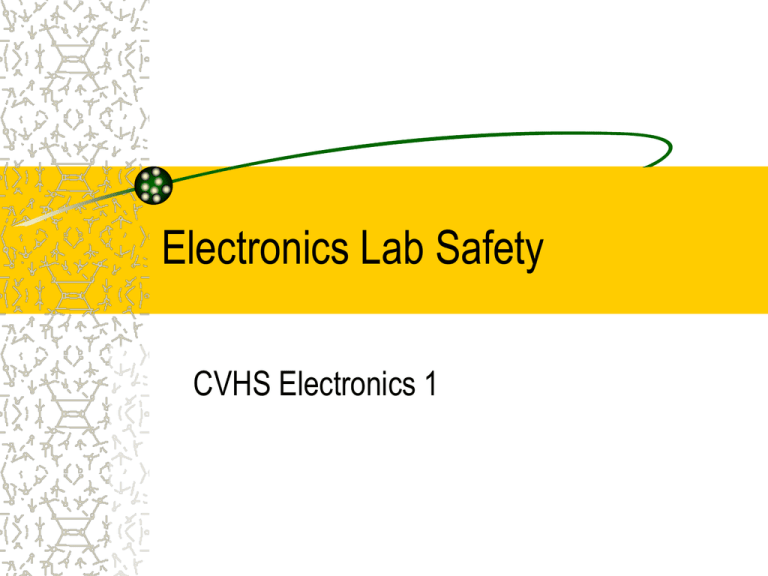Electronics Lab Safety
advertisement

Electronics Lab Safety CVHS Electronics 1 Electricity & You Your body operates on electrical impulses from your brain that travel along your nerves. It does not take much electrical energy to interrupt these electrical messages What do you think would happen to you if the messages from your brain to your heart/ lungs are interrupted? How much electricity does it take to hurt you? 100 milliamps (0.1 amps) of current is more than enough to kill you. How much electricity is in the wall? Most common electrical appliances operate on 120 VAC or 240 VAC The circuits these appliances operate on can range from 15 to 50 amps depending on the fuses/ circuit breakers they are wired to These protective devices are not designed to protect you, but rather protect the electrical system in your home GFCI GFCI (ground fault circuit interrupter) breakers and outlets are designed to protect you in the case of severe/ fatal electrocution by sensing any current not traveling through the hot or neutral wires How do you avoid injury? Generally, electricity takes the easiest path to ground One way to protect yourself is to take steps to insulate yourself from ground – – – – Rubber soled shoes Avoid damp areas Always power down Work with one hand Using lab equipment Soldering: – – – – – Wear safety glasses Always place soldering iron in holder Always solder over a workbench Always treat iron as hot Unplug with 5 to 10 minutes left in class – NO SOLDER BALLS Using power equipment: – Wear safety glasses – Follow all specific safety rules posted on wall General lab safety rules Never plug in an electronics project without first asking the instructor Never work on electronics equipment with wet hands/ in wet areas Never work on energized electronics equipment with both hands If you were not trained how/ asked to use it in this class, don’t touch it Always wear safety goggles when doing the following operations: – Soldering – Using any power equipment on the side workbench or cordless drills – Working with capacitors











